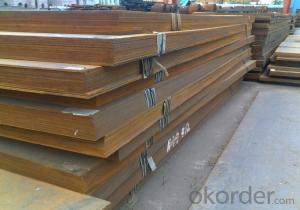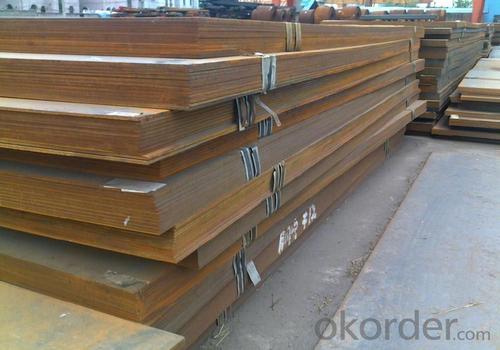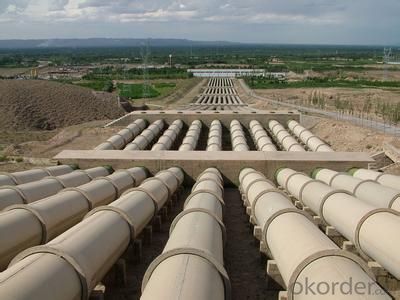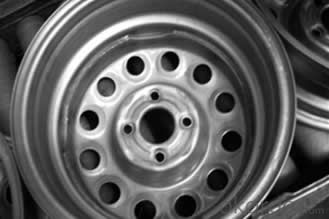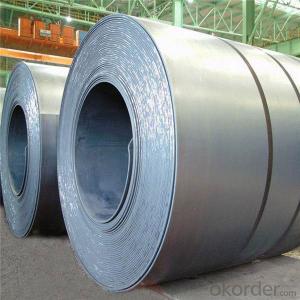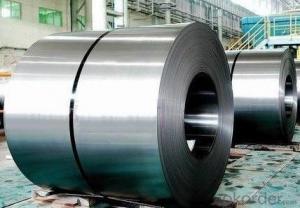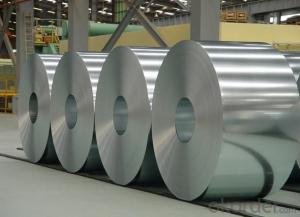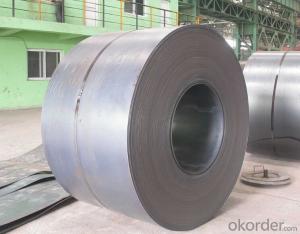Hot Rolled Steel Coil in Materials Construction
- Loading Port:
- Qingdao
- Payment Terms:
- TT OR LC
- Min Order Qty:
- 500 m.t.
- Supply Capability:
- 5000 m.t./month
OKorder Service Pledge
OKorder Financial Service
You Might Also Like
Specification
1. Product Description
Surface quality of the hot rolled plate intensity is relatively low, almost (oxidation, low roughness), but the plastic is good, generally for medium plate, manufacture, high strength, high hardness, high surface finish, generally for sheet, can be used as a drawing board.
2. Main Features
With continuous casting slab or slab as raw material, by step heating furnace, high pressure water descaling after entering the roughing mill, roughing expected by the cutting head, tail, and then into the finishing mill, and the implementation of computer control rolling and finishing after after laminar cooling (computer controlled cooling rate) and the winder, and became a straight hair volume.Straight hair volume of head and tail often show tongue shape and fish shape, thickness and width accuracy is poorer, side often exists defects such as wave shape, folding, tower.The volume weight is heavier, coil diameter is 760 mm.
3. Excellent Product Image
4. Application
5, cold rolled plate
Used in the production of all kinds of cold rolled products, including CR, GI, width, etc.
6, steel pipes with steel plate
Has good processing properties and the compressive strength, for the production of content product 500 l filling of LPG, acetylene, and various gases under high pressure gas pressure vessel.
7, high pressure vessel steel plate
Has good processing properties and the compressive strength, for the production of content product 500 l filling of LPG, acetylene, and various gases under high pressure gas pressure vessel.
8, stainless steel plate
Stainless steel has good corrosion resistance, mainly used in food industry, surgical equipment, aerospace, petroleum, chemical industry, etc.
, can good ductility.
5. FAQ
1.Q: Do you have attended any exhibition?
A: We almost go to Canton Fair and Overseas Exhibitions every year.
2. Q: How to guarantee the quality of the products?
A: We have established the international advanced quality management system,every link from raw material to final product we have strict quality test;We resolutely put an end to unqualified products flowing into the market. At the same time, we will provide necessary follow-up service assurance.
3. Q: How long can we receive the product after purchase?
A: Usually within thirty working days after receiving buyer’s advance payment or LC. We will arrange the factory manufacturing as soon as possible. The cargo readiness usually takes 15-25 days, but the shipment will depend on the vessel situation.
Why choose us?
Pre-sale Service
1. Sample can be offered with sample charge and courier fee by buyer's side.
2. We have full stock,and can deliver within short time.Many styles for your choices.
3. OEM and ODM order are accepted, Any kind of logo printing or design are available.
4. Good Quality + Factory Price + Quick Response + Reliable Service, is what we are trying best to offer you
5. All of our products are produce by our professional workman and we have our high-work-effect foreign trust-worthy sales team.
6. We have 18 years' experience of design, manufacture and sell lingerie, we cherish every order from our honor.
After you choose
1. Count the most efficient shipping cost and make invoice to you at once.
2. Check quality again, then send out to you at 1-2 working day after your payment.
3. Email you the tracking no, and help to chase the parcels until it arrive you.
- Q: What is the yield strength of steel coils?
- The yield strength of steel coils can vary depending on the specific grade and composition of the steel. However, the typical yield strength of steel coils ranges from 300 to 600 megapascals (MPa).
- Q: In construction, what types of stress require steel to be placed in footings?
- Shear and bending stress.
- Q: What products can we make with steel (eg Steel strip, rod, bar, rail, tube) How are these made? What can we make from these steel products?Can you please make the answers as detailed as possible you can because i really want to know this really well. Thank you.
- Your okorder (they make steel deck and steel joists) There are thousands of other items routinely produced from steel, including rebar, and all the metal in cars, airplanes, and about a million other things.
- Q: How are steel coils inspected for coil set?
- Steel coils are inspected for coil set by uncoiling a portion of the coil and measuring the amount of curvature or shape deviation. This is done using specialized equipment and techniques to accurately assess and quantify the coil set present in the steel coils.
- Q: What is the role of steel coils in the production of storage shelves?
- Steel coils play a crucial role in the production of storage shelves as they are used as the primary material to create the structural components of the shelves. These coils are flattened, cut, and formed into various shapes and sizes to construct the frames, supports, and shelves themselves. The durability and strength of steel coils ensure that the storage shelves can withstand heavy loads and provide long-lasting storage solutions.
- Q: How are steel coils inspected for elongation using elongation testers?
- Steel coils are inspected for elongation using elongation testers by first selecting a representative sample from the coil. This sample is then mounted onto the tester, which applies a controlled force to stretch the steel. The elongation tester measures the change in length of the sample as it is stretched, allowing the calculation of the elongation percentage. This data is crucial for evaluating the steel's ductility and mechanical properties, ensuring it meets quality standards and can withstand various applications.
- Q: How are steel coils used in the production of industrial boilers?
- Steel coils are used in the production of industrial boilers to form the main body and components of the boiler, providing strength and durability. The coils are first shaped into the desired boiler structure, such as the shell and tubes, and then welded together to create a sturdy and leak-proof vessel. Additionally, the coils are often used to manufacture the heat exchangers and other critical parts of the boiler, ensuring efficient heat transfer and reliable operation.
- Q: in broken steel can you to missions and get things like the dog, you previously didnt do/get in fallout 3?
- Yes, with Broken Steel there is no end to the game. You survive the main quest where you would die in the original game and may go on to explore the wasteland forever.
- Q: Can steel coils be used in the production of automotive parts?
- Yes, steel coils can be used in the production of automotive parts. Steel coils are often used in the manufacturing process of various automotive components such as body panels, frames, chassis, suspension parts, and engine parts. The steel coils are typically processed through various methods such as cutting, stamping, bending, and welding to shape them into the desired automotive parts. Steel is a preferred material for automotive parts due to its strength, durability, and resistance to corrosion. Moreover, steel coils are available in different grades and thicknesses, allowing manufacturers to tailor the material properties to meet specific requirements for different automotive applications. Overall, steel coils play a critical role in the production of automotive parts, contributing to the performance, safety, and longevity of vehicles.
- Q: density of mild steel (MS) is 7850 KG per metre cube , but i want to know the density of stainless steel
- Density Of Stainless Steel
Send your message to us
Hot Rolled Steel Coil in Materials Construction
- Loading Port:
- Qingdao
- Payment Terms:
- TT OR LC
- Min Order Qty:
- 500 m.t.
- Supply Capability:
- 5000 m.t./month
OKorder Service Pledge
OKorder Financial Service
Similar products
Hot products
Hot Searches
Related keywords
